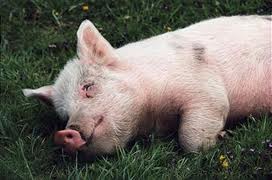 All diseases of pigs mainly occur in the warm season – late spring and summer. Most other pigs exposed to the disease erysipelas, or rubella, which mainly captures the pigs aged 4 to 12 months.
All diseases of pigs mainly occur in the warm season – late spring and summer. Most other pigs exposed to the disease erysipelas, or rubella, which mainly captures the pigs aged 4 to 12 months.
Infection faces has the ability to persist very long time in the stalls, or pastures eaten by pigs rubella patients. She persists in box, which had been fertilized with manure of infected animals, and especially – in places where the corpses of the fallen were buried pigs.
Infection caught in the animal’s body produces its destructive effect immediately, is 3 – b, sometimes seven days before starting to show signs of disease. However, the disease, according to latency appears very rapidly. Swine suddenly become very restless: grunt, angrily rushing to stall, it is no longer there. Then they try to be somewhere in a cool dark place, burrow into the straw, where he lay motionless. They have a vomiting eyelids swell greatly, from my eyes flow with tears. After a while the diarrhea begins, at what discharge are extremely smelly and often with blood, and in the meantime on the skin (mainly – on the head, ears, belly) are red spots that become darker, so that white pigs have the same form if they were doused with Burakov kvas. The disease lasts sometimes 2-3, sometimes 3-4 days in most cases ends in death cases. In some cases, the face is a protracted form of the animals are sluggish, take a little food, lose weight, often lie on the chest, coughing. Recovery occurs rarely, in most cases, patients are gradually depleted, and falling. Sometimes this is added to all parts of the necrosis of the affected redness of the skin: The skin in these areas is no longer inflamed and sometimes falls off the ears, tail, etc.
Second, it is extremely contagious disease of pigs, it’s – cholera pigs. It affects mainly pigs and in most cases ends in death. Infection of cholera, based in large quantities of manure and urine of patients with fever, as erysipelas, – a very long time remained in force in damp places. From the beginning of infection until the first signs of the disease is usually 5 – 7 – 10 days. The first signs of cholera are very similar to the symptoms of erysipelas, lethargy, lack of urge to food, vomiting, constipation in the beginning, and then – diarrhea, which is often bloody. The illness usually lasts a little longer than the mug, and death occurs at 5-7 days. It is often the case that an animal is sick two or three weeks, until it comes complete exhaustion. Often, when cholera is a disease of the stomach and intestines (diarrhea) joins another lung disease that is recognized by frequent, painful cough and the expiration of the nose.
Swine fever in most cases occurs very rapidly. Begins abruptly, after a few hours after infection, plague immediately stuns animal, which appears so weak that it staggers when walking, and then formed on the skin red spots, often from the nose and anus, and bleeding occurs in a day, and sometimes even faster, death occurs. In cases where the disease is prolonged in patients with a cough, discharge from the nose, bloody diarrhea.
From the description of these diseases can be seen that by their appearance is extremely difficult to distinguish from one another not only a simple villager, but sometimes the veterinarian. But doctors can pinpoint the disease, making the study of the blood of sick animals. A precise definition of disease is extremely important, as for the treatment of each disease, there are special tools that can be applied by a doctor.
In view of the fact that the recognition of symptoms of the disease is extremely difficult, it should be, whenever in the economy appears “sea pigs” immediately notify the nearest veterinarian.
Treat the same without a doctor infected with erysipelas, plague, cholera or fever – a hopeless task.
Therefore, all the attention in the fight against “swine plague” should be reminded that in order to prevent occurrence of disease or prevent its dissemination. In the first case, you must not let the pigs suspected pastures, where there have been cases of case, do not let strangers walk in the crib and svinarnyam not put in the same room with the newly acquired domoroslymi pigs. At the first disease should immediately separate the healthy and surpass them in some remote area of the patients, give them a good, hearty food, adding to the drinking of hydrochloric acid (spoon in a bucket), do not let them on pasture. Fallen – deeply buried in such places do not go to healthy pigs. But the most correct way to prevent a swine erysipelas vaccine. Carry it should not when the pigs have already started to hurt, but before that, the best-spring. The desire to produce vaccinated pigs must notify their veterinarian well in advance: in early spring. Against cholera and swine fever vaccinations are usually applied already at the beginning of the disease, since they are and healing. In households where there was one of the specified diseases of pigs, it is necessary to produce disease after cessation of thorough cleaning of all rooms, where the sick pigs. Purification (“disinfectant“) is to clean the manure from the stables, and soot (manure is best to burn), ventilation, and then carefully pouring the floor, walls, as well as all subjects were in a stable solution creolin or carbolic acid (one hundred parts of water, three of drugs), or lime-water (30-35 pounds of lime buckets of water) and hot liquor.
Tag Archive | livestock veterinary supplies
Animals in the House
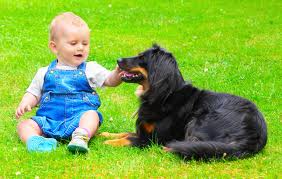 People of different professions and ages much of his free time paid breeding pets. One is a hobby brings joy of communion with nature, others see his team of friends who love to pay to them a touching affection. In most families there are animals in the house at the request of children for whom particularly high cognitive and educational importance of communication with animals. Caring for fish, birds and small animals instills industriousness, punctuality, creative skills, and respect for all living things.
People of different professions and ages much of his free time paid breeding pets. One is a hobby brings joy of communion with nature, others see his team of friends who love to pay to them a touching affection. In most families there are animals in the house at the request of children for whom particularly high cognitive and educational importance of communication with animals. Caring for fish, birds and small animals instills industriousness, punctuality, creative skills, and respect for all living things.
Setting the stage for the animals in the house, the family takes up a lot of concern that require some expenditure of funds, time and effort. Requires some skill, patience, discipline and knowledge of biological features of the animal. Of the more than half a million different species of animals in the home may well exist and be safe for humans, less than 1%. Sometimes people are trying to help those in need wild animals, take them home, so that in some time to release them back to freedom is stronger and healthier. But such altruism can result in disaster – tamed young animals, as adults, can no longer live independently and die. In this case it is better to leave the pet at home or transfer to the pet store, a school of living area, a station of young naturalists.
At present, opportunities for breeding in the home increased significantly: introduced new types of pets, in most major cities of the specialized pet shops are open, amateur associations are created, published a lot of literature.
Among domestic animals the most popular and widespread are exotic fish and other inhabitants of the aquarium. Aquarium – is not only container, a vessel for the content of aquatic organisms, and the specific biological system capable of self-regulation. Is rectangular, cylindrical, round, nodular with truncated apex, etc. Buy an aquarium, as well as his pets in pet stores can. To create a normal environment you need to create at the bottom of the tank bottom (sand, gravel, pebbles, shells), dilute aquatic plants and algae (water sprouts, , kobomba, Ricci uviranda and others), to acquire or produce their own devices for additional light and oxygen saturation of water. The aquarium can live as inhabitants of the local rivers and lakes (bitterling, eel, rudd, tench, gudgeon) as well as various types of exotic fish (Chinese, and calico telescope, the comet, celestial eye, a common goldfish and many others). Buying fish, you should consult the compatibility of different species and their feeding. It is best to refer to the literature.
More and more amateurs home terrarium – space for amphibians and reptiles content, as well as invertebrates and small mammals. However, keeping animals in terrariums little studied and is poorly lit in a special and methodological literature. First of all, must be carefully insulated enclosure to prevent the possibility of leaving his animals and the creation of a specific microclimate: a certain temperature, humidity, etc., Terrarium, usually manufactured without cracks of thick metal wire and a wall of glass (for observation). It can include toads, frogs, newts, snakes, turtles and lizards.
Fun activity is to breed the birds. When deciding to purchase feathered friends, you need to find out if someone is suffering from allergic diseases of family members, as the presence of birds in the house sometimes contributes to their aggravation. Do not rush to buy birds at random people, but before examining the requirements of feeding and caring for feathered refer to the pet store or a section of the amateur poultry. At home, the birds are kept in cages, aviaries or cages. Of the herbivorous birds can live in captivity sparrow grosbeak, finch, linnet, bunting, waxwing, bird, bullfinch, siskin, goldfinch, from insectivorous – lark, robin, common nightingale, singing thrush, nuthatch, starling, wagtail other. The most common is domestic content of exotic birds, especially parrots. They are all herbivorous, and many of them well to imitate human speech and are long-lived (live 50 – 80 years). Among poultry in the territory of Russia, the most common budgerigar, finch rack, parrot, gray parrot, pink cockatoos, and others.
When breeding wild or domestic mammals, in addition to the conditions and feeding, it is necessary to consider a number of ethical and sometimes legal issues. All mammals have well-developed psychic, teachable, trainable, responsive to affection and pain. In this regard, human relationships with them are governed by a number of legal acts: the rules of detention, transportation, quarantine, the decrees of the responsibility for cruelty to animals, etc. But there are unwritten laws of kindness and humanity. Therefore, to decide on the content of the mammals in the house should be, considering its capabilities and features of the animal.
From wild animals at home can live successfully protein, hedgehog, loir, hamster (Syrian or Central Asian).
Of the 300 breeds of dogs in the home would be best to include decorative. This variety of poodles, terriers, as well as Western and Oriental decorative dog (Maltese lap dog, or french, dwarf Pinscher, Pug, French Bulldog, Japanese Chin, Pekingese, and others).The plant in the house dog of any breed, it must be remembered that it is not a toy, but above all else and demands appropriate attention. Dog – the most loyal, selfless, forgiving, and understanding to each lot. Quite a few pleasant minutes delivers the contents of the house and different types of cats. They, like dogs, are the most common domestic mammals.
Any pets in the house – is not only worries and troubles, but above all it is an immeasurable joy of living creatures, with a part of nature.
Conjunctivitis in Birds.
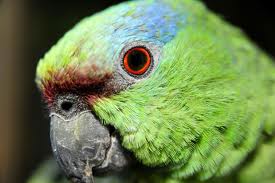 Conjunctivitis – an inflammation of the conjunctiva – a transparent mucous membrane connecting the eye that covers the rear surface of the eyelids and front of the eye to the cornea.
Conjunctivitis – an inflammation of the conjunctiva – a transparent mucous membrane connecting the eye that covers the rear surface of the eyelids and front of the eye to the cornea.
The most frequent causes of disease – irritation of the eyes with smoke, corrosive gases, as well as – dust and other foreign bodies in the eye. It is known that small birds love to rub his head on the perch, especially after bathing. If the perch is dirty, they can clog the eye. On the tits, which are more likely to rub his head on the perch, why they occur frequently and conjunctivitis, in the past bird lovers say that they are overwritten by the eye.
In canaries and other birds conjunctivitis may develop after prolonged feeding of cannabis. In this case, along with eye disease occurs and intestinal disorders. Inflammation of the conjunctiva in birds is related to indoor common, especially during the cold season, with cooling, if the cell is close to the vents or the bird is on the draft.
Connecting the eye mucous membrane contact with air and the environment. Therefore, in the conjunctive bags are always a variety of microorganisms. In clinically healthy parrots, for example, is dominated by staphylococci and other gram-positive bacteria. By reducing the body’s protective properties of these and other microbes can cause inflammation of the conjunctiva. It develops and diseases of internal organs, beriberi, and – in infectious diseases.
Symptoms. In acute conjunctivitis, mucous membrane reddens and swells, develops photophobia. Therefore, the birds keep your eyes closed or half closed. Discharge from the eye slit first liquid, and later – mucous or thick, opaque and purulent. These secretions accumulate in the inner corner of the eye in the form of clumps or filaments, glue eyelids.
Treatment. His start to eliminate the cause of the disease. Conjunctivitis, which developed because of the cold go away if you put a cell to another place and the bird will stay warm. In order not to happen, “mashing” the eye, you need to constantly monitor the purity of perches. In the event of illness due to improper feeding should begin to give the bird food, which meets the needs of the species.
The eyes of birds washed with fresh urine, the holy water (water with silver).
Diseases caused by adverse temperature conditions.
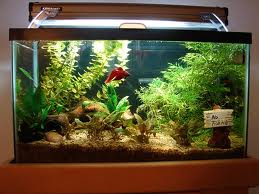 For too long exposure to cold on the body heat loss compensation is broken. In fish, both cold-blooded animals with falling ambient temperature decreases and body temperature. At the same time inhibited the function of the midbrain (cold anesthesia), and then suppressed by the hypothalamus and other centers of the central nervous system, blood pressure falls, breathing movements gill covers are rare. There is hypoglycemia, ie, decreases the amount of sugar in the blood. The central nervous system is particularly sensitive to the lack of sugar, as it has no glycogen. During prolonged hypoglycemia in nerve cells, irreversible changes. With a deep and prolonged hypothermia decreases the intensity and nature of the changes of metabolism – manifested, for example, anaerobic glycolysis, which goes to the autolysis and death comes first individual cells, and then the whole body.
For too long exposure to cold on the body heat loss compensation is broken. In fish, both cold-blooded animals with falling ambient temperature decreases and body temperature. At the same time inhibited the function of the midbrain (cold anesthesia), and then suppressed by the hypothalamus and other centers of the central nervous system, blood pressure falls, breathing movements gill covers are rare. There is hypoglycemia, ie, decreases the amount of sugar in the blood. The central nervous system is particularly sensitive to the lack of sugar, as it has no glycogen. During prolonged hypoglycemia in nerve cells, irreversible changes. With a deep and prolonged hypothermia decreases the intensity and nature of the changes of metabolism – manifested, for example, anaerobic glycolysis, which goes to the autolysis and death comes first individual cells, and then the whole body.
Resistance to the cooling depends on the state (the total resistance, fatness, age, etc.).The main cause of death of the organism from prolonged hypothermia is considered to tissue hypoxia and irreversible changes in the nervous system. Fish can live for a long time without food, but can not tolerate oxygen deprivation, even for a short period (from several minutes to several hours). In some cases, even in nature there are cases of mass death of fish with a sharp and significant reduction in water temperature (for a day or two), and the reason it is not the freezing of tissue fluid and the cooling of the protoplasm, a violation of the reactivity of the protein, leading to a profound disturbance of metabolism.
Gradual changes in temperature are rarely a threat to the health and lives of fish, while the sharp fluctuations can cause severe stress, resulting in significantly reduced fish resistance to disease. Temperature shock syndrome is well known, and should be avoided. Translate fish from one setting to another should be gradual, so that the temperature difference does not exceed 3-5 ° C.
Temperature not only affects the functioning of the body of fish, but also affects the occurrence of disease may contribute to the development of parasites. It is known that some infectious diseases of fish occur in the relatively cold water (10-12 ° C), the other most urgent occur at higher temperatures (20-25 ° C) – here are aeromonosis (rubella), inflammation of the swim bladder other. At low water temperatures the fish are suspended or slowed physiological functions of the body, breaks down the nervous system, respiration, circulation, and the formation of blood clots inside the blood vessels in and out, damaged gill apparatus.
Too high water temperature also causes disruption of the body of fish. Thus, even for short periods of high temperature “fired” gill lobes, and the skin appears whitish intense mucosal plaque. Gill petals fish become anemic, covered with slime, there is a rupture of the capillaries, there is bleeding. After some time, is necrotic decay and complete destruction of the gill filaments. On the gills of the affected areas settled saprophytic fungi and bacteria develops the disease process, and there is a fish kill.
Exposure to high temperatures in the presence of other unfavorable factors (especially the accumulation of water in the tank of a large amount of organic matter, high content of ammonia, etc.) causes an outbreak branhiomikoza. At high water temperatures dramatically exacerbated during aeromonosis (rubella) and swim bladder inflammation, accompanied by mass mortality of fish. In addition, depending on the temperature of the water appear a number of pathogens associated diseases. During the above-mentioned infectious diseases is complicated by the massive development of Ichthyophthirius, Dactylogyrus, and other agents of invasive disease. Some of these parasites are cold-loving, others – heat-loving. So, Costia necatris preferred temperature 10-22 ° C, Ichthyophthirius – 20-26 ° C, Dactylogyrus vestator – 24-28 ° C. At these temperatures, there are outbreaks of epizootic diseases of the: kostioza, ihtioftirioza, dactylogyrosis. All these temperature zones are safe, secure oxygen, carbon dioxide poor water with neutral reaction (pH = 7,0-7,1).
With the deterioration of environmental conditions decreasing the stability of the fish as too high and to very low temperatures. It should also be remembered that with increase in temperature increases the toxicity to fish and other aquatic organisms most chemicals.
From the above it follows that the temperature of water is an essential life-sustaining factor in the aquarium, which is the correct use can avoid a lot of trouble for their pets.
Vaccination of dogs: why and how to carry out.
Active prevention of diseases in dogs – tips and warnings
It’s no secret that dogs, like people who are at risk of contracting infectious diseases. Beloved pets await such a dangerous and common viral infections like enteritis, hepatitis, leptospirosis, plague and rabies. Reliable protection from these diseases – preventive vaccination.
The action is to develop a vaccine for dogs long active immunity. Vaccine should be distinguished from serum, which are intended for the treatment of infectious diseases, as initiated by passive immunity for a short time.
In order not to harm the poor pet vaccination, the vaccine must be purchased in pharmacies and clinics. Domestic and imported vaccines are available in two types: monovalent, containing a vaccine against the disease, and polyvalent – against a few at a time.
Despite the fact that in the first year of life the puppy will have to move 4.5 shots, first make better use of monovalent vaccine. They contribute to the development of a reliable immunity. To support the existing immunity of adult dogs suitable polyvalent vaccine.
Before the vaccine.
At the beginning of life the baby is protected by maternal immunity, which he was still in the embryonic period and then with colostrum. If the month puppy ate exclusively breast milk, and not go outside the apartment, in respect of infectious he is healthy. On the walk baby should be protected from dangerous contact with the environment and keep it on hand. This is extremely important, because you can only vaccinate healthy puppy.
Before you make a good shot to watch the appetite, stool, pet behavior. The temperature ranges from healthy dogs 38-39 degrees. Measure the temperature should be several times a day, not less than 15 minutes after waking up and eating. Such observations will help determine how well the dog suffered a vaccine.
Weakens the body is the presence of a puppy worms, they emit toxins inhibit the immune system. Therefore, prior to vaccination is important to get rid of parasites
When and how to vaccinate dogs.
The first preventive vaccine made against enteritis and hepatitis at the age of six weeks. Approximately two weeks later to repeat vaccination. The same amount of time necessary for sustainable production of immunity in dogs to these diseases for the year. Then, a repeat vaccination. Usually, puppies are easy to carry this vaccine.
No earlier than two and a half months of a puppy vaccinated against plague. Later, the vaccine is dangerous to do. After this vaccination complications are possible, so be a long quarantine period of three weeks, during which pet are immune to the plague. At this time the dog can not walk, run down, too cold, and wash.
When the puppy will grow all the permanent teeth, in about seven months old, vaccinated against distemper repeat. Then do it every year at the same time.
When the dog turns four months, you can vaccinate against leptospirosis. Puppies up to six months, the vaccine is administered again after six months if the dog is older, vaccination is repeated in a year.
Completes an annual list of vaccinations against rabies vaccinations. Allowed to make such a shot with a six-month old, but in practice often comes after eight months, when the booster will be held against the plague. Vaccination against rabies is carried by dogs is not easy. So within two weeks after vaccination is necessary to observe a strict quarantine.
Visit our Veterinary Supplies.
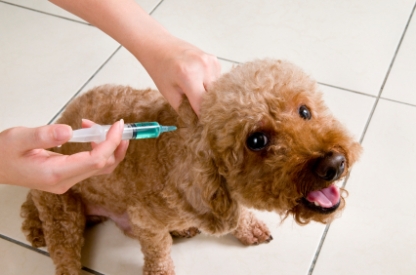
You must be logged in to post a comment.